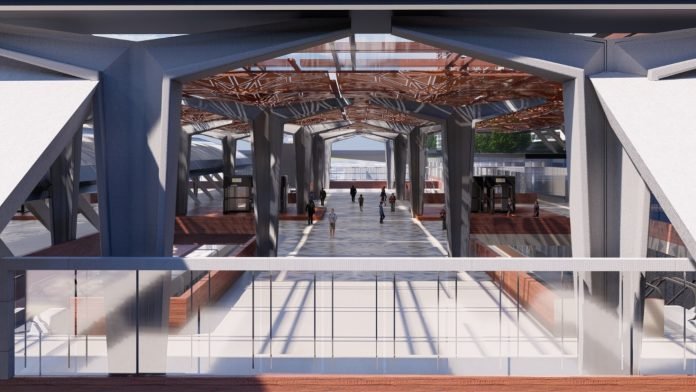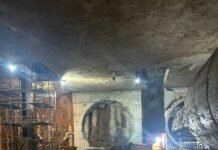MUMBAI (Metro Rail News): The Indian Railway Stations Development Corporation Limited (IRSDC) is redeveloping a number of railway stations throughout the country. Among them is Andheri, which is located in India’s commercial and financial capital – Mumbai, one of the world’s most populous cities. The goal of the reconstruction is to give passengers world-class amenities and to improve their travel experience.
The constructed area is 21,843 square metres. The redevelopment model chosen is DBFOT (Design, Build, Finance, Operate and Transfer). A proposal for the same has been processed for the competent authority’s in-principle approval. The RFQ (Request for Qualification) for the Phase 1 reconstruction of Andheri Railway Station will be issued once all necessary permits are obtained. Western Railways has previously granted in-principle clearance to the Andheri Master Plan and Floor Plans on 21.05.2021.
IRSDC will redevelop Andheri Railway Station in phases; the total redevelopment area will be 4.31 acres, with 2.1 acres dedicated to Phase 1 construction and the remainder to Phase 2 construction. Phase 1 redevelopment will cost Rs. 218 crores.
IRSDC’s MD & CEO, Sh. S.K. Lohia, stated, “Along with Andheri, the IRSDC will reconstruct the Mumbai stations of Dadar, Kalyan, Thakurli, Bandra, CSMT, Thane, and Borivali. These projects are in various stages of completion and are expected to be completed within the specified time frame. Redevelopment of these stations would enhance real estate prospects and usher in a period of socioeconomic transformation.”
The station’s reconstruction will include a concourse on the east side that will connect to all FOBs and connect the railway station to the metro station. Additionally, the station’s entrance, as well as drop-offs/pick-ups, have been proposed on the Versova Marg Road to alleviate congestion at an existing entrance. The deck will be completely linked with the Swami Nityananda Marg skywalks. Additionally, a through roof is planned above the suburban platforms, similar to the roofs at Churchgate and CSMT stations, to keep rains out and shine sunlight into the platform. The station will be completely divyang accessible and built according to the green building idea. It will be renovated into a smart station with an integrated building management system, CCTV, and other services. Commercial development will take place above the concourse level to provide travellers with greater amenities.
Andheri Station, one of the busiest on the Western Railway Network, serves two important railway lines: the Harbour Line, which connects to Chhatrapati Shivaji Terminus or Panvel, and the Western Line, which connects Churchgate and Dahanu. On the east side of the station is the Varsova – Andheri – Ghatkopar Metro Line Station. Andheri is a significant station for long-distance trains, with a daily passenger capacity of around 4.2 lakh.
It has nine platforms, with eight and nine reserved for long-distance trains and the remaining platforms for local trains. The station’s principal entrance is on the Andheri (West) side, but the east side entrance is highly congested. Numerous FOBs connect both sides of the station, while a skywalk connects the G.K Gokhale Bridge ROB to the Metro Station.
The redevelopment of railway stations is a priority for the Government of India, since it will transform them into ‘Railopolis’ — a mini-smart city with mixed-use development where people can live, work, play, and ride – thereby attracting significant investment and commercial prospects. These refurbished stations will provide travellers with cutting-edge amenities and improve their travel experience. To facilitate mission-driven development, streamline processes, and increase the ease of doing business, the Indian Railway Stations Development Corporation Ltd. (IRSDC), the nodal agency for station redevelopment in India, has developed a comprehensive set of handbooks, guidebooks, and codes for station redevelopment, including commercial development on railway land on a principle basis (TOD). IRSDC developed these codes utilising the Form-Based Codes technique, as outlined in the guidebook released by the Government of India’s Ministry of Housing and Urban Affairs (MoHUA). As part of this strategy, work on redeveloping 123 stations is currently underway. IRSDC is currently working on 63 stations, while RLDA is working on 60. According to current estimates, the total expenditure required for station refurbishment and real estate development will be approximately Rs 50,000 crore.





